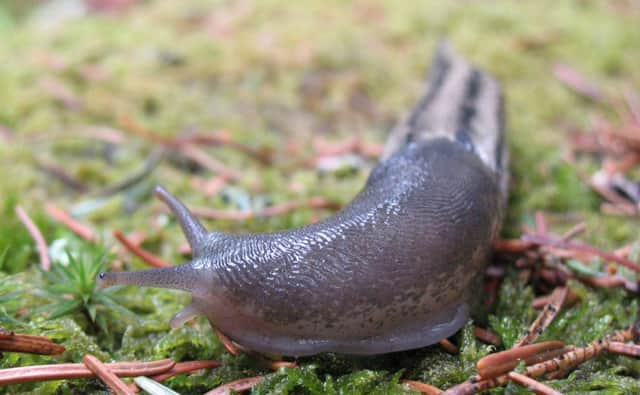Gardening: Slug it out


Venturing out each morning and evening on my constitutional slug patrol, I have picked off at least 30 of these incessant pests per session but each time I look out during or after a downpour, there they are again, climbing walls, scaling even the most thin-stemmed clematis, stripping plants of flowers and foliage and leaving their slimy trail.
There are more than 30 types of slug in the UK, some 95% of which are underground, nibbling on seeds and roots and laying 20-100 eggs multiple times every year.
Advertisement
Hide AdAdvertisement
Hide AdIt is believed that the average British garden contains over 20,000 slugs and snails. Slugs remain active in temperatures of 5C and above, consuming around 40 times their weight in the space of a day.
Paul Hetherington, director of fundraising and communications at the charity BugLife, says: “All the anecdotal evidence points to the sheer numbers of slugs and snails this year.
“They are bigger because they have not spent time in a torpid state of hibernation, they are reaching maturity earlier because they haven’t had these periods of rest when their body mass reduces, and they breed whenever they are active, not seasonally.
“When it’s hot and dry they will hibernate, but because of the weather, we have seen 11 months of slug and snail activity in the UK, whereas it used to be around seven.”
Advertisement
Hide AdAdvertisement
Hide AdThe changing weather patterns - mild, wet winters and wet summers - have boosted slug populations, but the situation has been exacerbated by the loss of natural predators including hedgehogs, thrushes, frogs, toads and ground beetles, which feed on slugs and help retain the balance of nature, he says.
There are plants which slugs don’t like, including aquilegias, geraniums and foxgloves, which have high toxin levels.
Deterrents include copper tape around plant pots, placing sharp sand or crushed eggshells around plants, or even building a pond or water feature which will attract toads, frogs and newts, all natural predators to the slug.
Some people recommend boiling up cloves of garlic, straining off the liquid and watering around plants with that. Other than that, it’s a case of continuing with dawn and dusk patrols to pick the slugs off.
Advertisement
Hide AdAdvertisement
Hide AdWhile many people opt for slug pellets, Hetherington claims that even so-called organic varieties may harm other wildlife.
Guy Barter, RHS chief horticultural adviser, says nematodes are probably the most eco-friendly solution. Parasitic nematodes occur naturally in the soil, but not enough to see off the sheer numbers of pests. They can be bought from online garden retailers. The organisms are mixed with water and then watered into the ground. Some specifically target slugs, infecting them with bacteria.
“They are an excellent idea because they have no effect on non-targeted organisms, are safe for the user and are organic,’’ Barter says.